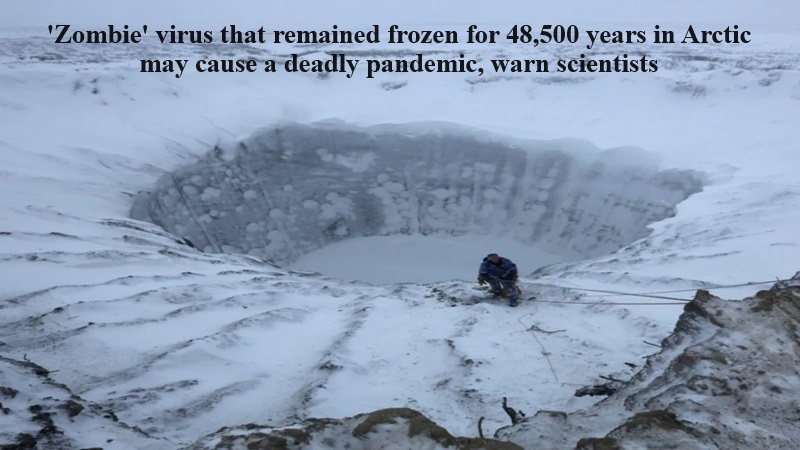
In a recent study, scientists have raised concerns about the potential danger posed by viruses entombed beneath ice sheets in Arctic permafrost and other frozen environments. The researchers caution that the thawing of Arctic permafrost could release these “zombie viruses,” presenting a significant risk of catastrophic global health emergencies.
The urgency of the issue is exacerbated by the ongoing rise in temperatures driven by global warming, leading to the gradual melting of frozen ice in various regions. The threat associated with these “zombie viruses” has become more pronounced as a consequence of climate change-induced environmental shifts.
The term “zombie viruses” is evocative of the potential dangers locked within the icy layers. Rising temperatures contribute to the thawing of Arctic permafrost, releasing viruses that have remained dormant and frozen in the ground for thousands of years. The impact of this release could extend beyond the immediate region, posing risks to global health.
To better understand the potential risks associated with these ancient viruses, scientists have utilized samples retrieved from Siberian permafrost. The study emphasizes the need for increased awareness and proactive measures to mitigate the threat posed by these revived viruses.
As global temperatures continue to rise, the melting of Arctic permafrost becomes a critical concern. The consequences of releasing long-dormant viruses into the environment highlight the interconnectedness of climate change, environmental processes, and public health. Addressing these challenges requires a comprehensive and collaborative approach to both understanding the risks and developing strategies to minimize the potential impact on global health.

Post Your Comments